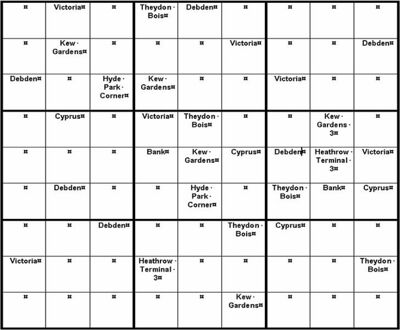- Portals
- The Current Year
- ED in the News
- Admins
- Help ED Rebuild
- Archive
- ED Bookmarklet
- Donate Bitcoin
Contact an admin on Discord or EDF if you want an account. Also fuck bots.
Mornington Crescent: Difference between revisions
imported>Cleveland Bay II - Return Of Cleveland Bay |
imported>Cleveland Bay II - Return Of Cleveland Bay |
(No difference)
| |
Latest revision as of 13:43, 16 January 2013

Mornington Crescent is an absurdly complicated game invented over 9000 years ago by former British king, Eton-educated aristocrat Humphrey Lyttelton. It centres around navigation of the London underground, following any number of rules that are presented in a special code only Britfags understand.
Recently, since Humphrey received the IRL banhammer, every single Britfag on /b/'s everywhere has been playing the game in the obscure hours of the night while the rest of us are asleep. An underground society has been established to a point that the moment anyone posts a Mornington Crescent image at any time the Britfags are awake results in huge, complicated games taking place, branching off into multiple subgames.

Rules
The basic rules are as follows:
- The winner is the person who reaches Mornington Crescent
Variants
There are many different rulesets in Mornington Crescent, some of the more popular ones being:
- Crabbit's Rules
- Finsbury Rules
- The Sierpiński Variation
As of late, a separate subset of rules has been devised specifically for *chan play, which allows multiple vectors and inhibits the inclusion of the Elephant and Castle sub-clause. The gameplay area has also been extended to the Docklands Light Railway to facilitate the extra players.
Dollis Hill
Dollis Hill is the Mornington Crescent equivalent of dividing by zero. The game ends up in an indefinite loop, until one brave soul decides to play the Ongar Denial.
People who play Dollis Hill on purpose often find themselves banhammered.
A non-britfags guide to playing
There are essentially two plays that one can make in a game of online Mornington Crescent. The first being a move, and the second being a challenge.
- A move:
A move, which can only played in turn, is the simplest play. Following the established rule set (stated before the game begins), each move will contain up to three separate parts:
- The move itself, stating which station to play to
- Any quoted rules to explain more elaborate moves
- Any other notes to challenge or bluff your opponents.
The point of the move is not simply to state your play, but also to try to ensnare the opposition in one of the many potential pitfalls, such as dead-end bilinear plays and other situations in which the opposition is forced to breach the rules.
In the event you make the winning move to Mornington Crescent, it is even more important to reinforce your move with as many rule quotes as possible. It is instinctive for the opposition to challenge such a move to try to reclaim the game.
- A challenge:
Being a complicated game, it is often that a player unwittingly finds himself in breach of one of the many rules and regulations; however, if such a move goes unchallenged, play often goes on unaltered. A good player keeps a keen eye open for slip-ups on behalf of the opposition as to thwart any stratagems that they may be developing.
It is important to remain civil at all times when committing to a challenge, as well as stating which rule set your challenge is based off of. While challenges, unlike moves, can be made at any time, it is sometimes advisable NOT to challenge a move immediately (or at all), even if the basis for the challenge is solid, as challenging at the wrong time can give another opposing player an advantage.
People who have actually played this game IRL
Mornington Crescent Sudoku

 51963813: a particularly interesting game
51963813: a particularly interesting game



